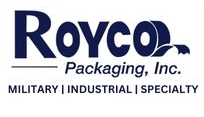In packaging, barrier bags are the unsung heroes. They mingle with our everyday life; yet, often go unnoticed. They are the warriors, shielding our coffee beans, pet food, and medical products against the adverse elements of the environment. They preserve freshness, flavor, and integrity. But what are they?
Defining Barrier Bags
To put it simply, a barrier bag is a type of packaging developed to protect its contents from external factors such as oxygen, moisture, light, and odor. Its job is to act as a barrier, literally. Made up of multiple layers of diverse material like foil and plastic, each layer serves a specific purpose in creating a stronghold against harmful factors.
Yet, not all barrier bags are created equal. Different objects require different levels of protection, accordingly, barrier bags come in different levels to meet these requirements.
Three Levels of Barrier Bags
- Low-Level Barrier Bags
These are the foot soldiers in our invisible war against element intrusion. Low-level barrier bags, as the name suggests, offer a minimal level of resistance against external factors. They are ideal for packaging goods that will be consumed in short periods and don't need a high degree of protection. Think of it as a raincoat, it will keep you dry in a light shower but may not hold strong in a storm.
- Medium-Level Barrier Bags
Stepping up the defense, medium-level barrier bags offer a considerable level of protection against external factors. They are a halftime snack for your chips and cookies, ensuring prolonged freshness and peak flavor experience. The practicality of medium-level barrier bags lies in its versatility. They are suitable for a vast range of perishable items.
- High-Level Barrier Bags
Offering superior protection, these are capable of preserving the quality of highly sensitive items for long durations. They come into play for packaging substances that can be outright damaged or rendered useless if exposed to harmful elements. Think of medical equipment, high-end electronic parts, and specialty coffee beans. It protects these items like a strong fortress against a battalion of destructive elements.
The Technology Behind Barrier Bags
The strength of a barrier bag isn't drawn from its visual appeal, rather from its technological makeup. Generally, they are composed of a multi-layer structure, each contributing distinct characteristics.
The outer layer often serves as a protective wall against mechanical impacts such as abrasion or puncture. The middle layer typically stands as the ‘immune system’, acting as an impervious layer to gases and odors. The inner layer commonly forms the product contact layer, designed to ensure product safety and help manage seal integrity.
With this multilayer system, barrier bags can ensure the product remains as fresh on day 90 as they were on day 1. The bag's durability, flexibility, and protection are only as strong as the weakest layer, a testament to the importance of each layer.
Choosing The Right Barrier Bag
Several factors are worth considering - the nature of your product, the level of sensitiveness to external factors, the shelf-life desired, and even your budget.
If you're packing a short-shelf-life item, low-level barrier bags would suffice. On the other hand, high-value, sensitive goods might necessitate the high-level ones.
But remember, while barrier bags play a significant role in product preservation, they are only one part of the larger ecosystem. The product's quality, the storage condition, and handling during transportation also influence the overall life span of the item.

